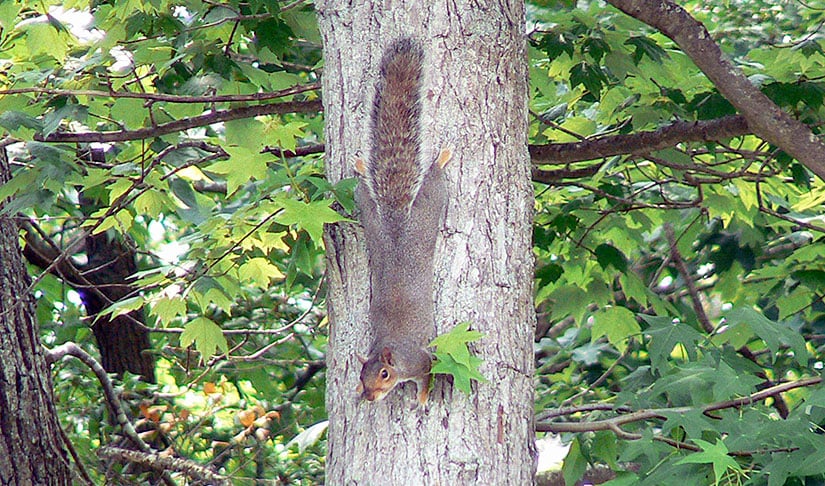The Great Squirrel Mystery | Chicago
There are two squirrel species in Chicago, and they are very particular about where they live. Gray squirrels tend to live in ritzy neighborhoods, while fox squirrels thrive in more affordable areas. A local biologist thinks he’s finally figured out why.
Chicago has a great squirrel mystery.
The city’s two dominant squirrel species—fox squirrels and gray squirrels—have rarely lived next to one another in the Chicago Metropolitan area. While gray squirrels resided in wealthier neighborhoods, fox squirrels preferred less affluent areas.
The tendencies of these two species to “divide and conquer” the Windy City caught the attention of University of Illinois at Chicago professor Joel Brown. An evolutionary behavioral ecologist who has studied exotic mammals like snow leopards and hippopotamuses around the world, Brown dove headfirst into urban squirrel research in 1997, when he co-founded Project Squirrel.
“When I arrived in Chicago, I was looking for study animals and I was both delighted and surprised that nobody was studying the squirrels in our backyards,” Brown said. “Here’s probably the most conspicuous backyard wildlife and nobody was paying attention to them.”
A joint collaboration between UIC and the Chicago Academy of Sciences’ Peggy Notebaert Nature Museum, Project Squirrel tracks online data submitted by citizen-scientists about fox and gray squirrels. Using a computer or mobile application, the volunteer citizen-scientists can submit squirrel photographs or record their observations in an online survey.

Identifying the squirrels themselves can often cause confusion. In a nutshell, Chicago’s eastern fox squirrels (Sciurus niger) are typically rust-colored with orange bellies and black-fringed tails. Eastern gray squirrels (Sciurus carolinensis) are gray in color with frosty white bellies and tails.
Using the data gathered by his citizen-scientists, Brown has revealed some peculiarities about the two squirrel species, including their neighborhood preferences.
Project Squirrel data has indicated that Chicago-area fox squirrels prefer to set up their digs in more “dangerous” environments: exurbs where predators like coyotes and hawks are present, and inner-city neighborhoods where outdoor cats and dogs are more common. Gray squirrels occupy “safer” areas, where there are fewer predators, and cats and dogs are kept inside. Fox squirrels are bold enough to manage the risk of predators, whereas gray squirrels are more skittish. But in the absence of predators, gray squirrels outcompete fox squirrels for food resources and nesting sites.
Brown discovered important clues about the squirrels’ neighborhood preferences in his own backyard, in the inner-ring suburb of Oak Park. At the turn of the 19th century (when novelist Ernest Hemingway was growing up in Oak Park) there were no squirrel species at all in the area, mostly as a result of hunting and deforestation. Half a century later, a population of fox squirrels moved in and wandered the suburb exclusively for decades.
But early in his studies, Brown observed a curious new influx of gray squirrels near his home. According to Brown, the shift in the squirrel population is due to behavioral changes in pet owners. With the adoption of a local leash law in the 1990s and fewer residents leaving their cats and dogs outside, predation risks have been lowered significantly, to the benefit of gray squirrels.
Project Squirrel is not limited to Chicago—it has now grown into a nationwide network of thousands of citizen-scientists. With more eyes on the streets uncovering scientific evidence about squirrels, it is possible that our understanding of these seemingly simple animals will prove increasingly complex.

— Sean Keenehan






